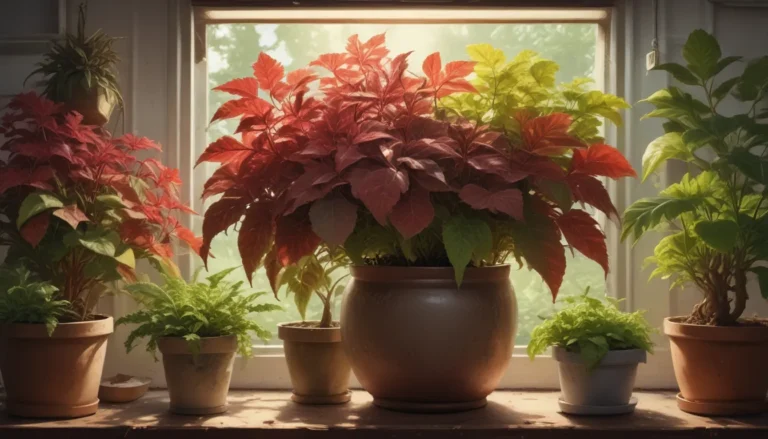The Ultimate Guide to Growing and Caring for Umbrella Tree Plants

If you’re looking for a houseplant that’s easy to care for and offers a touch of tropical charm without the fuss, look no further than the umbrella plant. Also known as the parasol plant or octopus tree, this versatile and adaptable houseplant is a favorite among both experienced and novice plant parents.
In this comprehensive guide, we’ll take you through everything you need to know about cultivating and caring for umbrella tree plants. From their cultivation and history to propagation, how to grow them, pruning and maintenance tips, species and cultivars to select, managing pests and diseases, best uses, and a quick reference growing guide, we’ve got you covered. Let’s dive in!
Cultivation and History
The umbrella plant, scientifically known as Heptapleurum spp. (formerly Schefflera), has a rich history that dates back centuries. The first identified species of umbrella plant was described by Hendrik van Rheede in the 1680s. Over time, European explorers began identifying more species, ultimately leading to their cultivation and study in Europe in the mid-1800s.
Today, umbrella trees are classified under the Heptapleurum genus, but many still refer to them as Schefflera. Native to regions such as Taiwan, South China, Australia, Java, and New Guinea, umbrella trees come in two common species: H. arboricola, the dwarf umbrella tree, and H. actinophylla, the standard-sized umbrella tree.
Whether grown indoors or outdoors, these plants are known for their palmately compound leaves that give them a distinctive, tropical appearance.
Umbrella Tree Propagation
Umbrella trees are relatively easy to propagate, whether from seeds, cuttings, or air layering. With fresh seeds, warm water, and the right conditions, you can successfully grow these plants from scratch.
From Seed
Growing umbrella trees from seed requires fresh seeds and proper care. By soaking the seeds in warm water, planting them in a suitable mix, and maintaining optimal conditions, you can watch your seeds germinate and grow into healthy plants.
From Cuttings
Propagating umbrella trees from cuttings is another effective method. By taking stem cuttings with at least one leaf node, placing them in a suitable medium, and providing the right environment, you can encourage root growth and establish new plants.
Via Air Layering
Air layering is a technique commonly used to propagate umbrella trees. By creating a suitable environment for root growth on the stem, you can develop new plants with ease.
How to Grow Umbrella Tree Houseplants
When it comes to growing umbrella trees indoors, providing the right conditions is key. These plants prefer bright, indirect sunlight, moist but well-draining soil, and regular fertilization. By following these growing tips and proper care practices, you can help your umbrella tree thrive and flourish.
Growing Tips
- Place your umbrella tree in bright, indirect light and rotate it regularly to promote even growth.
- Protect your plant from drafty doors and windows during the colder months.
- Fertilize your umbrella tree every two to three months during the growing season to support healthy growth.
Pruning and Maintenance
To maintain the health and appearance of your umbrella tree, regular pruning and maintenance are essential. By addressing issues like legginess, sparse canopy, and weak stems, you can ensure that your plant remains vibrant and attractive.
Species and Cultivars to Select
While umbrella trees come in a variety of species and cultivars, some popular options include Actinophylla, Compacta, Gold Capella, Janine, and Trinette. Each cultivar offers unique characteristics, such as variegated foliage and compact growth habits, making them ideal choices for different preferences and environments.
Managing Pests and Disease
Umbrella trees are generally resilient to pests and diseases when provided with proper care. However, common pests like mealybugs, scale, and spider mites can occasionally affect these plants. By identifying and addressing pest issues promptly, you can protect your umbrella tree from damage and ensure its continued health.
Best Uses for Umbrella Plants
Umbrella trees are versatile plants that can serve various purposes, from acting as standalone specimens to providing a backdrop for other plants or creating bonsai arrangements. Whether grown indoors or outdoors, these plants offer an easy and attractive addition to any space.
Quick Reference Growing Guide
- Plant Type: Tropical evergreen tree
- Flower/Foliage Color: Yellow/green, yellow, white, variegated
- Native to: Australia, Java, New Guinea, South China, Taiwan
- Maintenance: Low
- Hardiness (USDA Zones): 10-12
- Bloom Time/Season: Evergreen (summer blooms outdoors)
- Water Needs: Moderate
- Exposure: Partial sun or partial shade (outdoors); bright, indirect light (indoors)
- Soil Type: Loamy
- Maturity: Up to 30 years outdoors
- Soil pH: 6.0-7.0
- Soil Drainage: Well-draining
- Family: Araliaceae
- Genus: Heptapleurum syn. Schefflera
- Common Pests and Diseases: Mealybugs, scale, spider mites; root rot
- Species: Canadensis, chinenis, occidentalis, siliquastrum
Conclusion
Umbrella trees are beloved for their tropical charm and easy care requirements, making them an excellent choice for both seasoned plant enthusiasts and newcomers. By following the guidance outlined in this guide, you can cultivate and care for your umbrella tree with confidence and watch it thrive in your home or garden. Whether you’re looking to expand your indoor jungle or simply enjoy the beauty of these versatile plants, umbrella trees are sure to make a delightful addition to your plant collection.





